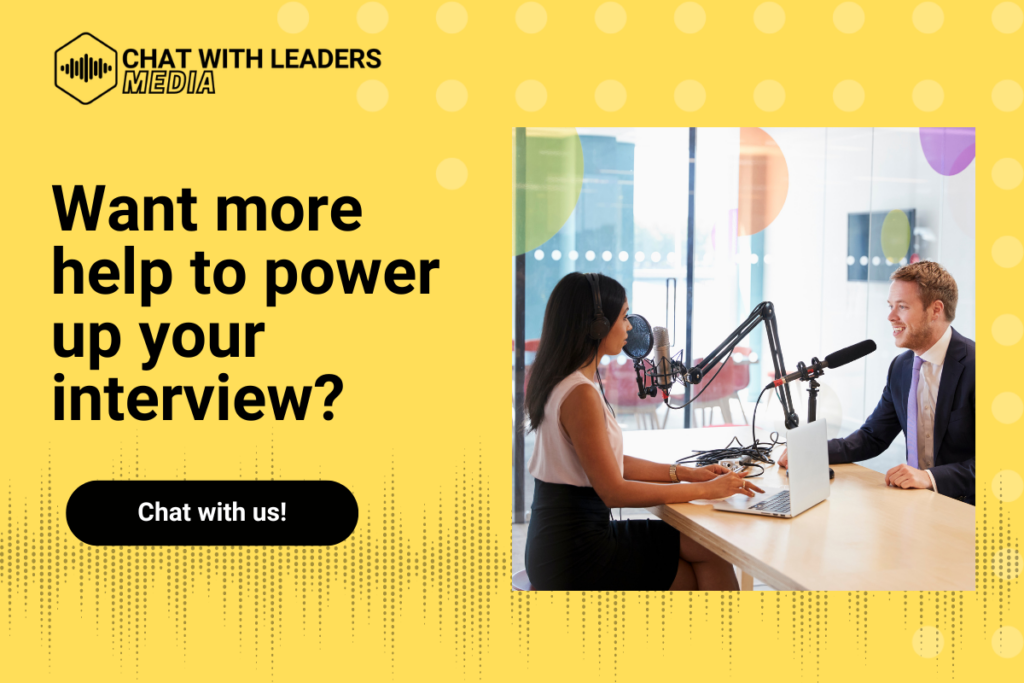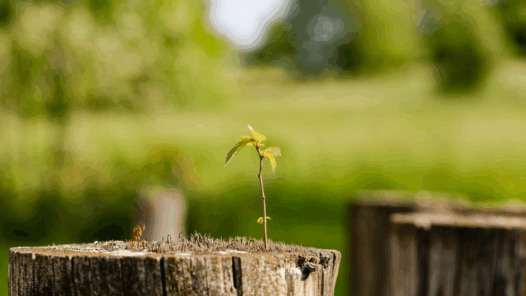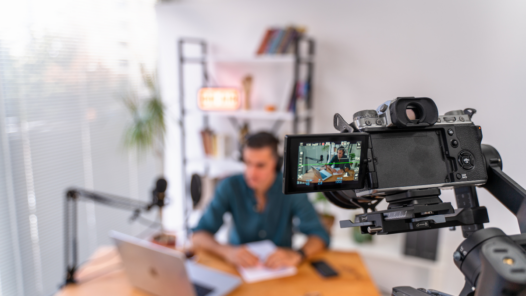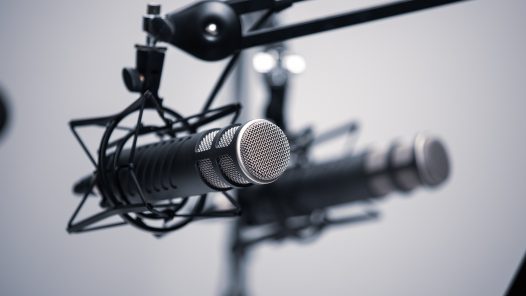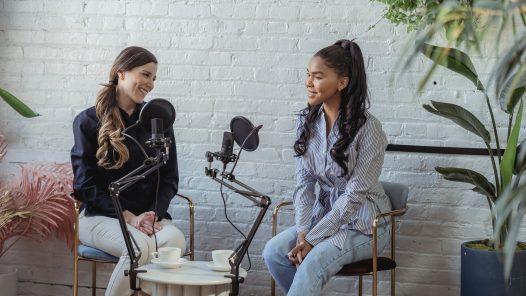In today’s digital landscape, podcasts have revolutionized the way we consume content. Among the diverse genres, business podcasts stand out as influential platforms, enabling entrepreneurs and organizations to amplify their message. At the heart of these podcasts lies the crucial role of the host, who conducts meaningful conversations and has the job of entertaining and informing listeners.
A podcast host can be anyone, from a thought-leader, a consultant, a founder, you name it. And building your interview skills and online presence can get the best out of your guests and really set your show apart.
Okay, so you’ve got your first podcast guest or episode topic written out. You’re ready to prep for recording. Scroll below for tips on hosting that first podcast episode!
Prepare for In-Person Recording
Select the right location. Obviously when picking a recording space you need it to be accessible for you, your guest, and your production team. More importantly, you need to:
- Consider noise levels and acoustics
- Ensure privacy and minimal interruptions
Organize necessary equipment. Once you pick your recording location, this will help you determine what equipment you need:
- Microphones and headphones
- Audio interface and recorder
- Pop filters and mic stands
- Backup recording equipment
- Any cameras or video devices
- Arrive early to set up and test equipment
- Be adaptable to changes during the recording
Prepare for Recording Online
Create the optimum recording environment. Now that podcast hosting can be remote through Zoom or other video conferencing apps, recording anywhere has been easier. Here’s a checklist for you and your guest:
- Ensure all participants have a stable internet connection
- Check the quality microphones,
- Review Zoom’s recording options: local vs. cloud recording
- Optimize Audio and Video Settings
- Audio recording using headphones to prevent echo and feedback
- Adjust microphone settings for clarity
- Position webcams at eye level for a professional appearance
- Ensure adequate lighting for clear visuals
- Familiarize guests with the recording setup and expectations
Day before recording
Drink plenty of water. The human brain is 80% water. Something as simple as drinking water can help you stay clear, calm, and alert. It also helps reduce dry mouth noise.
Avoid caffeine and dairy (if you can). Caffeine can dehydrate you, making your mouth dry. Dairy may contribute to mucus and make your mouth sound sticky. If you have either, make sure to have water as well. Also, mouthwash before the interview helps, especially if you’re recording in-person!
Wear comfortable, professional clothing. You want to not only look great, but feel confident and at ease.
Avoid overly bright colors or patterns that are distracting. The colors and patterns may not stand out as much in a crowd, but they will with a camera focused on you. You want the audience to be engaged with you, your guest, and the wisdom you both are bringing.
Avoid noisy attire. This ensures things such as loud jewelry won’t be distracting to you or the guest, and won’t be picked up on the microphone.

Tips for Interviewing and Recording
Be an active listener. Look at the guest and provide non-verbal cues that demonstrate engagement, such as nodding along and facing them while they’re speaking.
Speak with a natural tone. Take your time. You can can edit out silence and repeated statements as needed. If you make an error, just call “cut” and pause for a couple seconds. Then, pick up where you left off.
Breathe! We often don’t notice how little we’re breathing until we find ourselves out of breath halfway through a presentation or recording. Take full breaths between each sentence. This will help you take your time and avoid having to take a breath in the middle of a sentence or using too many filler words.
Provide smooth transitions. After a question is answered, you can acknowledge what that person said as you transition to the next question. Some examples include, “Building on that…,” “I love what you said about…,” or “Speaking of which…”
Feel free to improvise. If someone says something that catches your attention, it will likely capture the audience’s attention. Feel free to ask a follow-up question that’s not on the script.
Be present. Sometimes all you need to do is shake the self-consciousness and pretend f you’re not being recorded. Be present and really focus on the person you’re interacting with or the script you’re following.
Relax and enjoy. Mistakes are normal. Because this is recorded, you can edit as needed. Our team is here to take everything else off of your plate so that you can be present with the guest and enjoy the conversation!
Bonus Tips and Tricks for a Successful Podcast
Incorporate visuals for video recording. Along with editing video cutting from the host(s) and guests, you can also incorporate visuals that surround a talking point. This can be headline clips, b-roll footage, or stats and graphs.
Use audience feedback for improvement. Feel free to close your show with asking for audience feedback. You can read reviews as well to see what notes listeners leave in good or bad reviews.
Collaborate with co-hosts or other podcasters. Collaborating with other shows or thought leaders is a great way to develop compelling podcast content and get your show in front of other podcast listeners.
You’re on your way to be a great podcast host
Remember, it’s not just about perfecting your technical prowess right off the bat. It’s about creating an authentic connection with your guest and your audience.
Embrace your unique voice, be genuinely passionate about your topics, and always listen to your guest and your listeners’ feedback. With each episode, you’ll grow, learn, and refine those hosting skills, making your podcast an indispensable part of your audience’s day. So, get ready to hit that record button and get ready to make that episode!
Do you want more help with the audio and visual production of your show? Find a time to chat with us here. We can help take that show idea to the next level!


